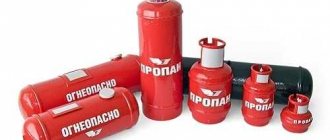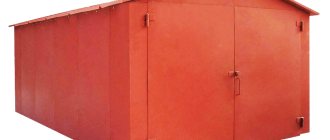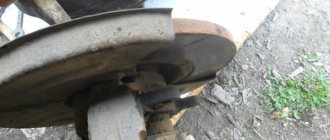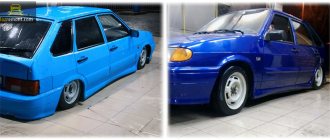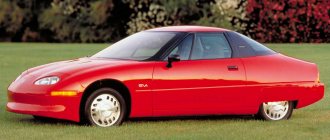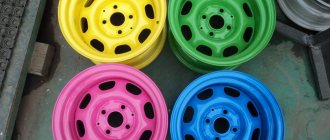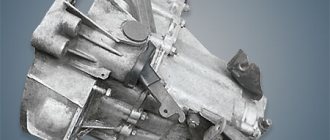Is it necessary to know the thickness of the metal body on a car? After all, the body is one of the most important parts of the car. And all the parts inside can be replaced one way or another.
And any driver will have to tinker with problematic body metal. Therefore, those car enthusiasts who prefer to buy used cars on automobile markets first inspect the body part.
What can the body tell about the car?
Body metal is quite an expensive part of any car. It is very important to monitor his condition carefully.
After all, this place of the car is exposed to undesirable weather conditions: strong sun, humidity and temperature fluctuations.
Often, the entire history of a given car can be traced by the condition of the body.
A professional auto mechanic will always be able to distinguish serious body damage from minor, cosmetic repairs. Based on the condition of the body, you can determine whether the car was involved in an accident and how serious the damage was.
And also how these damages were hidden. Body repairs have their own nuances that need to be taken into account when selecting a car.
A few comments
- Some deviation from the readings indicated in the table of factory values is allowed. For example, on a BMW 3, the thickness gauge showed 170 microns (and according to the standard it should be in the range of 100-165), but this does not mean that the component was repaired. Much depends on the year of manufacture, place of assembly, and whether polishing was done.
- Some motorists are frightened by some scatter of values during the measurement process. Here you need to take into account that such a spread occurs even on a car that has just left the showroom. If the fender shows 100, the hood 140, the door 120, then this is normal.
- Practice has proven that the thickness of the paintwork on domestic and Japanese cars, even according to the table, is a thin layer - about 100 microns. The European manufacturer paints with a thicker ball of paint - 150 microns.
- The internal elements of the body have a layer of 40-90 microns, because external influence on them is not provided.
- Minor dust or dirt on the surface does not particularly affect the final measurement result, but a crust of dirt will be a serious obstacle to obtaining correct results.
The condition of the paintwork is almost perfect
A used car may not have excellent surface condition. There are always small scratches and chips: on the front part, grille, hood.
There are scratches from shoes on the sills. If you do not notice such flaws. And the coating looks like a new car, most likely, it was repainted.
The size of body gaps
There can be no factory-made uneven or asymmetrical gaps in the areas where the panels connect to each other. If you see anything like this. Most likely there was physical damage to the body, which was subsequently painted over. For the same reason, the doors in the car should not stick and have a clear opening order.
Fasteners, bolts and handles
During factory assembly, not all fasteners are painted along with the body. Some of them are installed on the car after finishing the painting work. It is worth carefully inspecting the car's handles; they are often ignored during repairs. Therefore, they can reveal what defects a particular car had.
Factory paint performance
Factory paint provides protection to the metal base of the body, as well as other layers that are applied to it - galvanization, primer. Only strict adherence to technology ensures the required durability of the body service. How much will the total thickness of the coating made at the factory be? For most cars, the indicator is in the range of 70-180 microns, while the spread across the car can be 20-25 microns, for one part - 10-15 microns. For the following elements, a layer thickness of 50-90 microns is allowed:
- door pillars;
- thresholds;
- trunk;
- engine compartment space.
It is impossible to paint a car without this error, even at the factory. The paint and varnish product may be unevenly distributed in different areas: for example, in horizontal areas the layer will inevitably be thicker than in vertical ones. Also, during painting, shagreen appears - surface roughness. Painting indicators also differ for parts made of non-ferrous and ferrous metals. Thus, even on a new car, the readings may vary when measured by the device.
Determining the size of paintwork on a passenger vehicle
Different types of cars have more or less the same level of paintwork. Standards from the factory suggest a level of 100-140 microns.
However, during body modifications and further painting of the car, in some places there is a deviation of the cover from this norm.
Due to the increased presence of putty. In these places, the coating thickness can increase to 200 microns.
For body parts where it is difficult to determine this indicator with the eye, a special tool is used to identify this thickness - a thickness gauge.
If on one car you observe a spread of coating from 110 to 310 microns. Most likely, such a car was undergoing repairs and was repainted.
This device is present in all major auto repair shops. Therefore, if you need a detailed assessment of your car, you always have a chance to contact specialists in this profile.
The most expensive high-level thickness gauges can determine the thickness of paint on individual parts: aluminum or plastic.
Don’t forget that American cars usually have a thicker factory coating layer than Russian or Japanese ones.
The device determines the length of the interval from the sensor to the base of the car body. The closer the thickness gauge magnet is to the metal body, the greater the angle the needle moves.
To accurately determine the thickness of the paint layer, there is a special table of factory indicators. Which must be followed for an accurate conclusion.
Measuring the thickness of paintwork - why is it done?
The thickness of the paint layer on car parts is an indicator that reflects the distance from the surface of the body to the metal base itself. Paintwork can be measured in millimeters (mm), but on most modern cars it is so thin that it is measured in microns, also known as micrometers (µm). One micron is equal to 0.001 mm. Even such a small layer is enough to protect the car from water, dirt and oxygen.
This value is set at the factory depending on the vehicle model, but in accordance with accepted standards. There is no general standard and thickness can vary widely. It will depend not only on the wishes of the manufacturer, but also on the following factors:
- mode, drying temperature;
- staining method;
- number of paint layers;
- brand of paint.
Why do you need to measure the thickness of paint on a car? The coating from the factory is very different from what most auto repair shops do. Perfect coloring is an expensive option, so craftsmen save on paint. A weld may be hidden under its layer if the car is a “constructor”. Putty and paint are often used to cover rot, holes, and pits in old equipment. All this is revealed by special measurements. The following data can also be checked using the meter:
- degree of wear of the machine;
- the fact that body repairs have been carried out in the past;
- presence of polished scratches;
- places where paint thickens during rough repairs;
- too frequent polishing.
Since it is almost impossible to achieve factory parameters under normal conditions, all deviations are easy to identify, which will allow you to refuse the purchase or demand a serious discount.
Body metal thickness by car brand
For accurate measurements, you need to attach the device to the car body. Smoothly move it along the surface, starting from the front edge. To ensure accurate results, measurements must be repeated 3-5 times.
Then calculate the average, taking into account all measurements. And then be sure to compare your measurement options with the indicators in the factory table.
Metal thickness on cars table
| Automobile | Model | Paintwork thickness (µm) |
| Audi | A1, A3, A4, A5, A7, A8 Q3, Q5, Q7 | 80-100 110-165 |
| BMW | 1-series, 2-series, 3-series, 5-series, 7 series X1, X3 X5, X6 | 100-165 90-110 120-165 |
| BYD | F3 | 75-100 |
| Cadillac | Escalade,CTS | 120-150 |
| Chery | Amulet, Tiggo | 100-120 |
| Citroen | C5, C-Elysse C4, C3, Picasso, Berlingo DS4 | 110-140 75-125 205-230 |
| Daewoo | Nexia, Matiz | 90-120 |
| Fiat | Albea, Punto | 100-140 |
| Ford | Focus Explorer, Kuga Mondeo | 150-165 135-145 115-130 |
| Hyindai | Accent, IX35, I30, I40, SantaFe, Elantra Tucson, Solaris, Sonata | 70-110 90-130 |
| Honda | Accord Civic Fit, CR-V | 130-150 100-135 80-100 |
| KIA | Sportage, Sorento, Cerato, Cee'd, Picanto Soul, Rio, Venga, Optima Quoris | 100-140 120-140 150-180 |
| Lexus | RX, ES, LX CT, GX, LS IS | 140-150 120-150 110-140 |
| Mazda | CX-7, CX-5 3.6 | 85-120 110-130 |
| Mercedes-Benz | C, E, S GL, ML | 165-180 90-140 |
| Mitsubishi | Lancer, Pajero L200, Outlander XL, ASX | 90-125 55-75 |
| Nissan | X-trail, Patrol, Juke, Qashqai, Murano, Tiida, Pathfinder lmera, Teana | 80-120 130-150 |
| Opel | Astra, Corsa, Mocca, Zafira, Insignia, Vectra | 110-160 |
| Peugeot | 208, 308, 508, 3008 4008 | 100-120 60-80 |
| Renault | Logan, Koleos Fluence, Duster, Megane, Sandero | 180-230 100-140 |
| Skoda | Octavia, Yeti, Superb, Fabia, Roomster | 100-140 |
| Subaru | Forester, Impreza, Outback, Lagacy, Tribeca | 100-140 |
| Suzuki | Grand Vitara SX4, Swift, Splash | 70-100 90-120 |
| Toyota | LC200, Camry, Highlander, Auris, Verso Avensis, Corolla, Prado, Prius, RAV4 | 110-130 80-110 |
| Volkswagen | Polo, Golf Tiguan, Passat, Caddy, Multivan, Amarok Touareg, Jetta | 80-110 110-140 140-180 |
| Lada, VAZ | Kalina, Priora Granta, Niva Largus | 60-100 110-140 180-230 |
Lada Priora
The next domestic model produced at the Volzhsky Automobile Plant is the Lada Priora. Today it is produced in 4 body variations. The line of models also includes the Priora Coupe - which, however, has not yet gained any popularity among Russians.
Lada Priora
An important parameter of the Priora body, again, is the LCD/c value. It is noteworthy that for the Priora this figure is 12,000 Nm/deg in the sedan version. In other variations, except for the coupe, it is a row lower.
Despite this, there are general indicators for all 3 models, implying body dimensions. Thus, all body types (except coupe) have the same wheelbase, ground clearance and width. As for the length, let us recall that the sedan’s figures are 4350 mm, the hatchback’s are 4,210 mm, and the station wagon’s are 4,340 mm. The heights of the bodies are also different: the sedan is 1420 mm, the hatchback is 1435 mm, and the station wagon is 1508 mm.
Initially, the weak areas of Priora bodies were considered to be the roof, hood and trunk. It is for this reason that experts insist on the mandatory treatment of all internal surfaces of problem areas by the car owner himself with an anticorrosive agent.
Priora body protection against corrosion is provided for 6 years. In practice, this period is determined by: zinc coating of the sills, bottom and arches, as well as the use of low-alloy steel.
Dimensions of Priora
Indeed, practical experience has proven that the Priora body is incredibly resistant to corrosion. If problems start, the first ones at risk are the bumpers, then bubbles form on the paintwork in the winter, and the paint peels off.
The 12 thousand Nm/deg indicator on the Priora sedan is not a large value. Even the VAZ-21106, not to mention foreign cars, has a higher figure. Thus, Priora owners who prefer active driving would do well to strengthen the car’s frame. In particular, strengthening should involve the installation of strut struts and modernization of the SPU on the rear axle.
Read news about the new Niva
- AVTOVAZ increased prices for LADA Niva for the second time in 2022 » Lada.Online - all the most interesting and useful about LADA cars
- Sale of new VAZ (LADA) Niva cars 2022
